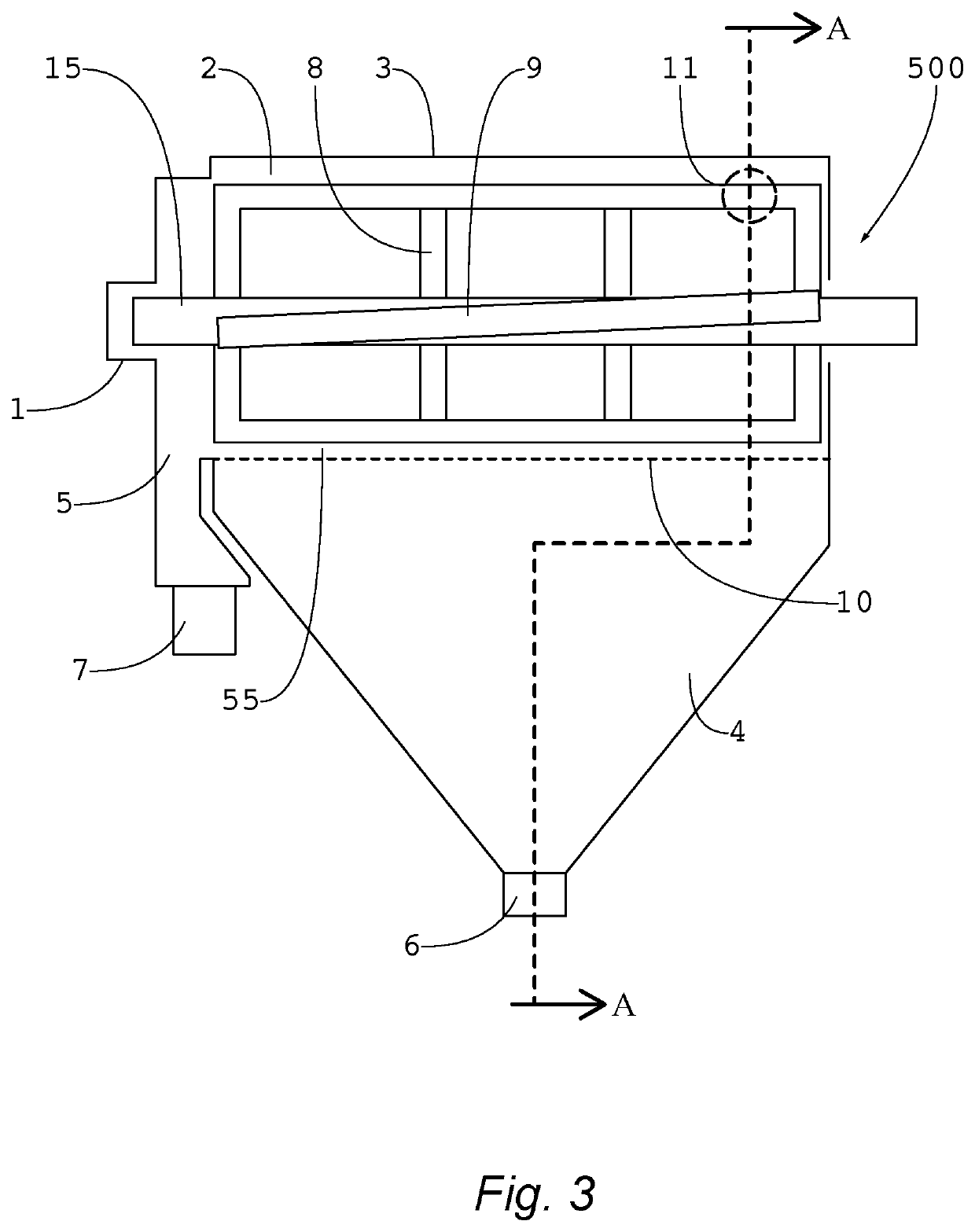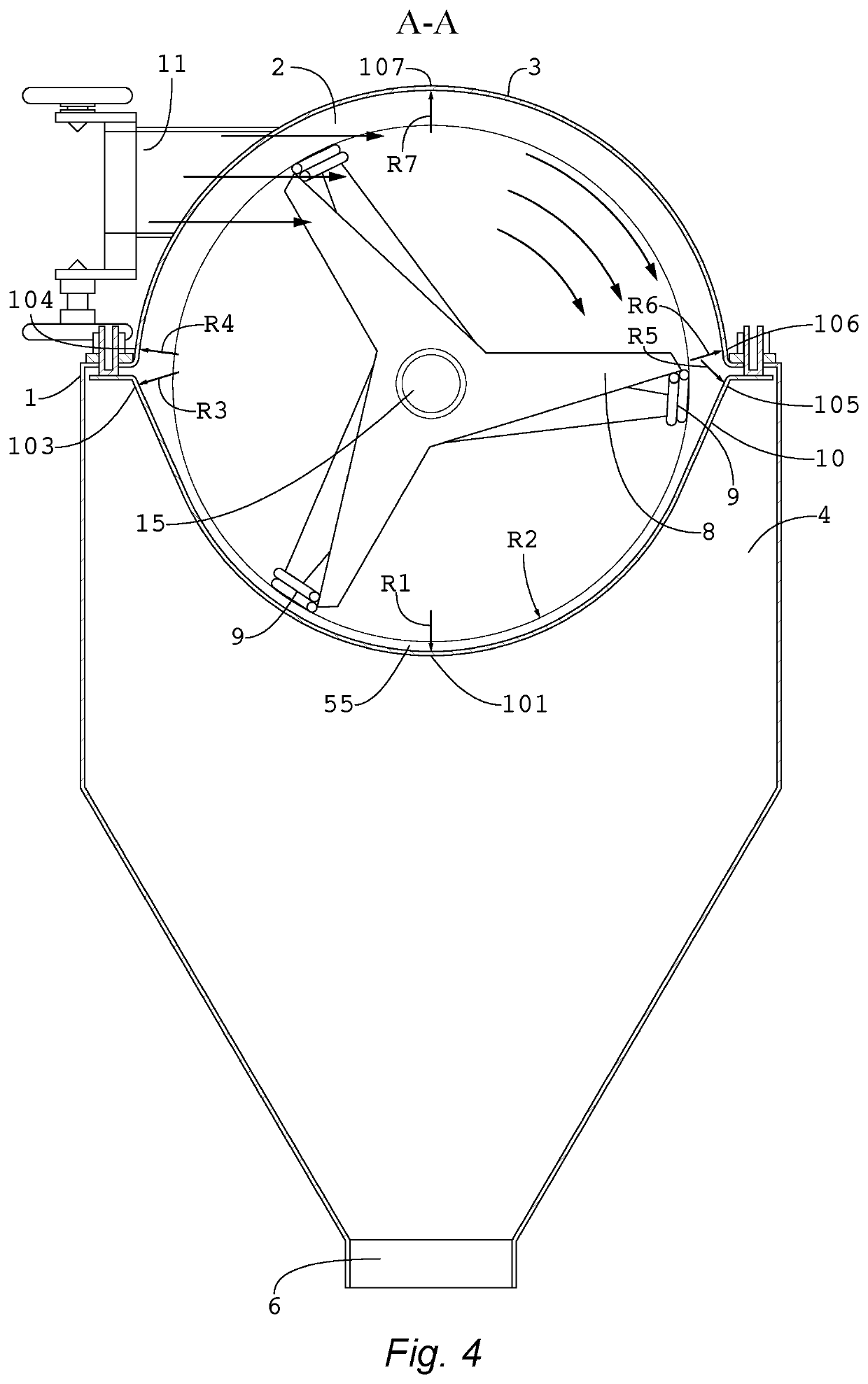Method for separating fine fractures and coarse fractures using a vacuum
a vacuum and fine fracture technology, applied in the direction of solid separation, agriculture tools and machines, chemistry apparatus and processes, etc., can solve the problems of increasing shipping costs, fewer grain mills available for use, and large equipment requirements, so as to reduce vibration and power consumption, the sieve surface is greatly reduced, and the effect of reducing the vibration
- Summary
- Abstract
- Description
- Claims
- Application Information
AI Technical Summary
Benefits of technology
Problems solved by technology
Method used
Image
Examples
Embodiment Construction
[0005]Exemplary embodiments provide a method for separating fine grain fractures from coarse grain fractures using a centrifugal scattering device as a replacement to the traditional sifter mill, preferably using a method which utilizes a vacuum to draw fine grain fractures through the sieves. In the exemplary embodiments, the aspiration surfaces of the sieves are greatly reduced compared to traditional sifter mills. In other words, much less sieve area is necessary to separate the same amount of product. In some applications, the exemplary embodiments use 1 / 20th of the sieving aspirations surfaces of a traditional sifter mill. Vibration has been minimized, along with the equipment dimensions and power consumption. In an exemplary embodiment, flour of three different grades can be produced with only three types of sieves. The sieves are easily replaceable in a minimal amount of time. The product (coarse and fine fractures of grain) are transported through a stream of fluid (air) whi...
PUM
 Login to View More
Login to View More Abstract
Description
Claims
Application Information
 Login to View More
Login to View More - R&D
- Intellectual Property
- Life Sciences
- Materials
- Tech Scout
- Unparalleled Data Quality
- Higher Quality Content
- 60% Fewer Hallucinations
Browse by: Latest US Patents, China's latest patents, Technical Efficacy Thesaurus, Application Domain, Technology Topic, Popular Technical Reports.
© 2025 PatSnap. All rights reserved.Legal|Privacy policy|Modern Slavery Act Transparency Statement|Sitemap|About US| Contact US: help@patsnap.com



